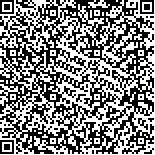|
|
| |
|
|
| 本文已被:浏览 1052次 下载 1231次 |

码上扫一扫! |
|
|
| 莱氏拟乌贼纳精囊超显微结构 |
|
王峥1,2, 张盛农3,4, 刘长琳3,4, 翟介明5, 林铃生6, 陈四清3,4, 孙礼娟5, 葛建龙3,4, 边力3,4
|
|
1.中国水产科学研究院黄海水产研究所 农业农村部海洋渔业可持续发展重点实验室 山东 青岛 266071;2.上海海洋大学水产与生命学院 上海 201306;3.中国水产科学研究院黄海水产研究所 农业农村部海洋渔业可持续发展重点实验室 山东 青岛 266071;4.青岛海洋科学与技术试点国家实验室海洋渔业科学与食物产出过程功能实验室 山东 青岛 266071;5.莱州明波水产有限公司 山东 莱州 261418;6.福建省逸有水产科技有限公司 福建 漳州 363402
|
|
| 摘要: |
| 本研究采用组织切片和透射电镜技术,对莱氏拟乌贼(Sepioteuthis lessoniana)纳精囊进行超显微结构分析,并通过扫描电镜和投射电镜技术观察纳精囊中精子的形态构造。结果显示,莱氏拟乌贼口膜具有1个椭圆形的纳精囊,呈乳白色,交配后雌体的口膜内侧散布大量精子囊。纳精囊由囊壁组织、中心管腔和储精小囊组成,储精小囊数量较多,少数呈圆形或椭圆形,2个或多个储精小囊形成中心管腔,二者的囊腔中均分布大量精子。储精小囊和中心管腔由上皮细胞组成,细胞间排列紧密,其细胞核较大,细胞质中含有多种细胞器,包括线粒体、内质网、高尔基复合体和囊泡等;中心管腔中精子大多排列紧密有序,精子头部朝向纤毛,鞭毛位于囊腔中间。莱氏拟乌贼的精子头部细长,由圆屋顶形的顶体和细长圆柱形的精核组成,线粒体距位于精核后端,尾部为细长鞭毛。研究表明,莱氏拟乌贼纳精囊具有储存精子的功能。其中,储精小囊的上皮细胞具备一定分泌功能,其分泌物质能吸引精子进入纳精囊。 |
| 关键词: 莱氏拟乌贼 纳精囊 显微结构 超微结构 |
| DOI:10.19663/j.issn2095-9869.20210418001 |
| 分类号: |
| 基金项目: |
|
| Microstructure and ultrastructure of the seminal receptacle of Sepioteuthis lessoniana |
|
WANG Zheng1,2,3, ZHANG Shengnong1,4, LIU Changlin1,4, ZHAI Jieming5, LIN Lingsheng6, CHEN Siqing1,4, SUN Lijuan5, GE Jianlong1,4, BIAN Li1,4
|
|
1.Yellow Sea Fisheries Research Institute, Chinese Academy of Fishery Sciences, Key Laboratory of Sustainable Development of Marine Fisheries, Ministry of Agriculture and Rural Affairs, Qingdao, Shandong 266071, China;2.College of Fisheries and Life Science, Shanghai Ocean University,
Shanghai 201306, China;3.4. Laizhou Mingbo Aquatic Products Co., Ltd, Laizhou, Shandong 261418, China;4.Laboratory for Marine Fisheries Science and Food Production Processes, Pilot National Laboratory for Marine Science and Technology (Qingdao), Qingdao, Shandong 266071, China;5.Laizhou Mingbo Aquatic Products Co., Ltd, Laizhou, Shandong 261418, China;6.Fujian Yiyou Aquatic Science and Technology Co. LTD, Zhangzhou, Fujian 363402, China
|
| Abstract: |
| The seminal receptacle of cephalopods plays a key role in its reproduction. The number and location of seminal receptacles of different cephalopod species are different, so the seminal vesicles of cephalopods are of interest to researchers, similar to the sperm that female cephalopods store. Sepioteuthis lessoniana had an oval milky white seminal receptacle located on the buccal membrane. In this study, histological and transmission electron microscopy techniques were used to analyze the ultrastructural characteristics of the seminal receptacle of S. lessoniana for the first time. The results showed that the seminal receptacle was composed of glandular parietal tissue, a sperm storage bulb, and a central lumen. The cyst wall tissue was composed of epithelial cells, muscle tissue, and connective tissue. Epithelial cells could be identified by the visible round nucleus in the center of the cell. The demarcation between the monolayer epithelial cells and the connective tissue was obvious but the boundary between the muscle tissue and the connective tissue was not obvious. The muscle tissue was mainly smooth muscle, with a thickness of approximately 140 μm to 240 μm. There were many sperm storage bulbs, most of which were irregular in shape and a few are round or oval with diameters, ranging from 180 μm to 300 μm, which was the main part of the seminal receptacle. Two or more sperm storage bulbs joined to form a central lumen, and connective tissue and muscle tissue were scattered around the sperm storage bulb and the central lumen. A large number of sperm were present in the sperm storage bulb and central lumen, and the acrosome and flagella of the sperm were stained dark blue and red, respectively. The sperm storage bulb and central lumen were composed of monolayer epithelial cells with round or elliptical nuclei. The cytoplasm contained a variety of organelles, including endoplasmic reticulum, mitochondria, and Golgi complexes. The endoplasmic reticulum could be divided into rough endoplasmic reticulum and smooth endoplasmic reticulum. The number of mitochondria was also higher. The elliptical Golgi complex was composed of multilayered, arched flat sacs and secretory vesicles, which release a large number of secretory granules after rupture. In addition, a large number of vesicles were found, which were filled with secretory granules. There were cilia outside the epithelial cells, and many sperms could be seen in the sperm storage bulb and central lumen. The sperm were closely arranged and orderly, and the head of the sperm is directed toward the cilia. The sperm of S. lessoniana had a slender head, which was composed of a dome–shaped acrosome and a slender cylindrical sperm nucleus. The mitochondrial spur was located at the posterior end of the sperm nucleus, and the tail was a slender flagellum. The results showed that the seminal receptacle can store sperm, the epithelial cells of the sperm storage bulb can secrete sperm, and the secreted substances can attract sperm, which plays a role in the process of directing sperm into the seminal receptacle. |
| Key words: Sepioteuthis lessoniana Seminal receptacle Ultrastructure Microstructure |
|
|
|
|